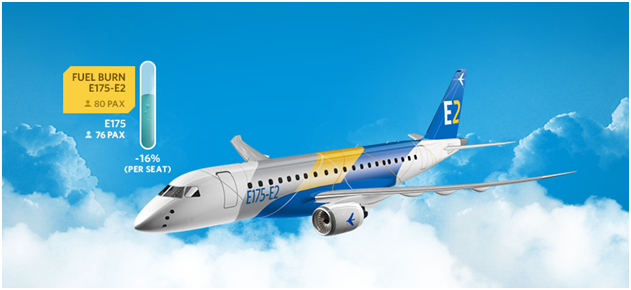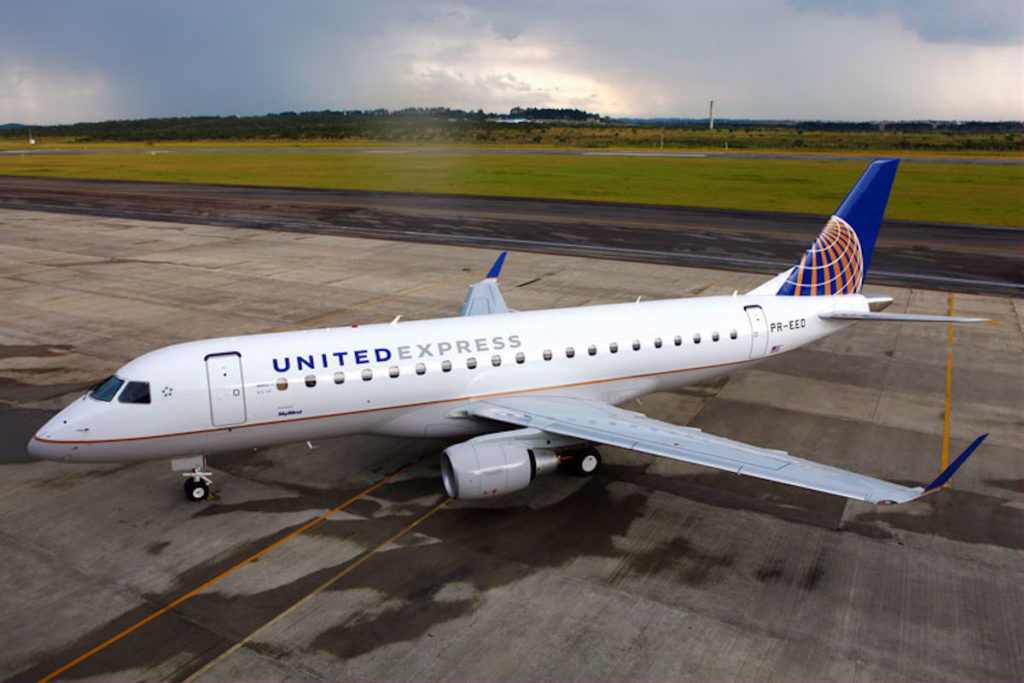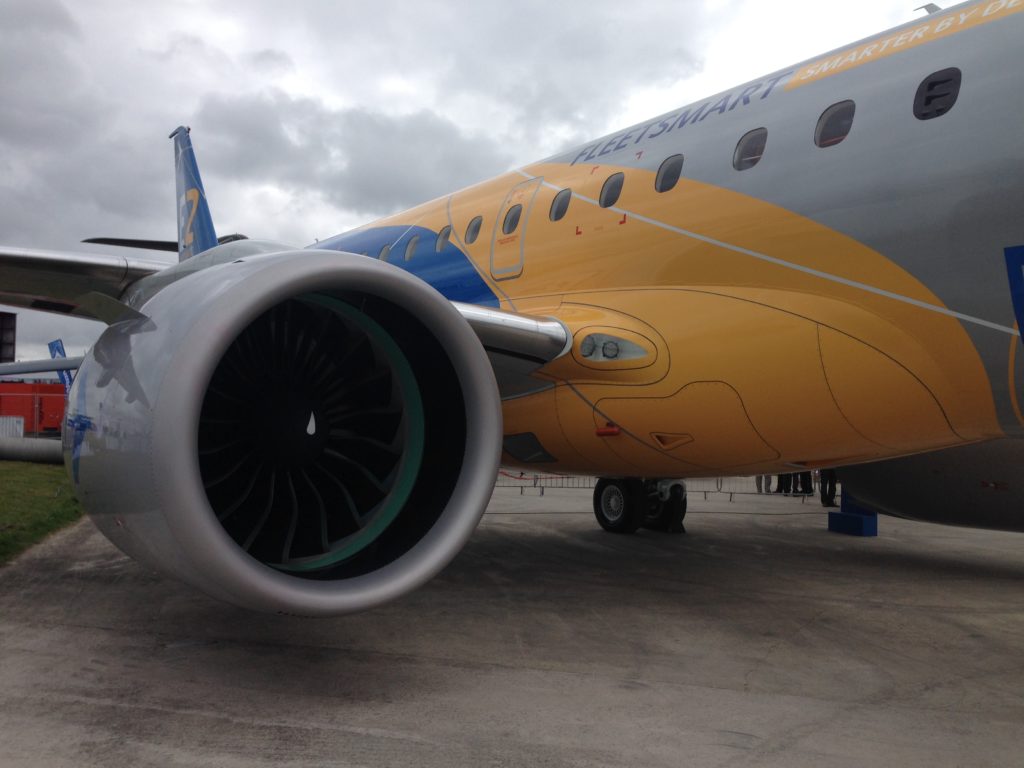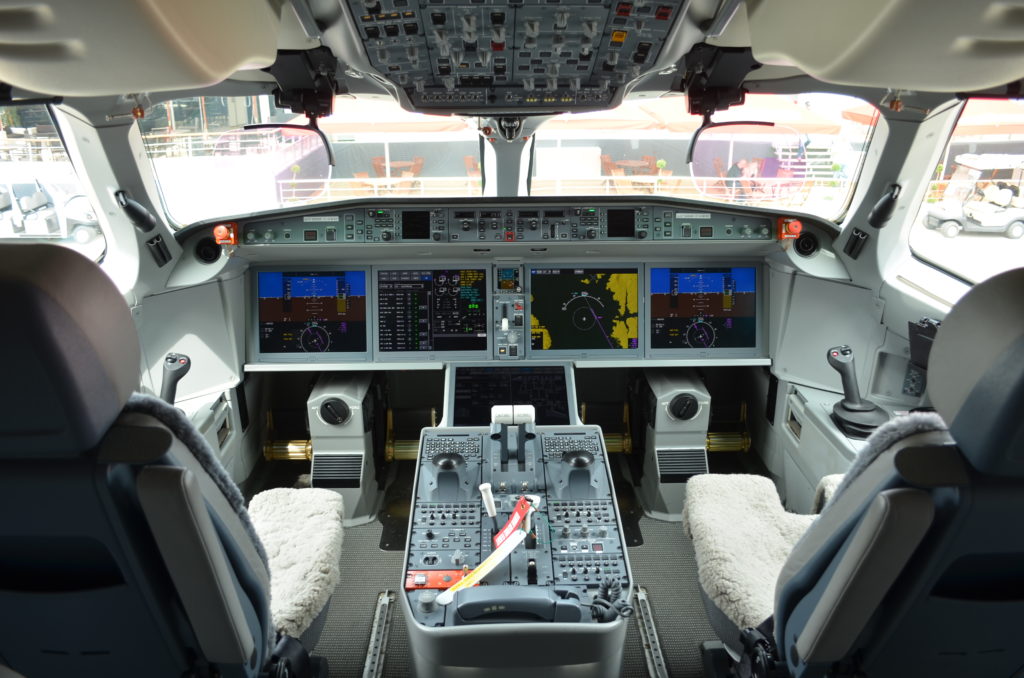Leeham News and Analysis
There's more to real news than a news release.
Leeham News and Analysis
- Boeing ponders 16/mo production rate for 787
- At long last, Boeing appears near certification and EIS for 777X
- Air India Flight 171 Preliminary Crash Report Is Unclear Regarding Pilot Actions
- Bjorn’s Corner: Air Transport’s route to 2050. Part 30.
- It’s official: MTU’s engine leader named CEO of Airbus Commercial from Jan. 1; future of Open Fan and A220-500 shifts to him
Seventeen new, derivative aircraft to see EIS through 2020
Subscription Required
Introduction

Delivery of the first Bombardier CS300, to AirBaltic, next week kicks off entry-into-service for 17 airplanes through 2020. Bombardier photo.
Oct. 20, 2016, © Leeham Co.: The past decade was a hive of activity as the Big Four OEMs launched new airplane programs and put the aircraft into service.
Airbus launched the A320neo, A330neo and A350 families. The A330neo is under production; the other two entered service early this year.
Boeing launched the 787 in late 2003 (outside the decade mark), rolled it out in 2007 and entered service with it in 2013. The 737 MAX was launched in 2011 and is in flight testing. The 777X was launched in 2013; components are in production.
Bombardier launched the CSeries in 2008; it entered service this year, after three years of delays.
Embraer launched the E-Jet E2 om 2013. Flight testing began this year.
New Entrants
These were supplemented by new entrants into commercial aviation: COMAC with its C919; Irkut with the MC-21; and Mitsubishi with the MRJ90. Of these, only the MRJ90 is flying. After more than two years of delays and several false starts, flight testing began in earnest this week at Moses Lake (WA) with FTA-1 (Flight Test Aircraft 1).
Development and new program launches have slowed, but the next decade is hardly going to be idle.
Summary
- Seventeen new aircraft or derivatives are scheduled to enter service through 2020.
- Five potential derivatives might see EIS through the same period.
- Three to five new or potential derivative aircraft might see EIS 2021-2025.
Posted on October 20, 2016 by Scott Hamilton
Airbus, Boeing, Bombardier, Comac, CSeries, E-Jet, Embraer, Irkut, Mitsubishi, Pratt & Whitney, Premium, Sukhoi
Airbus, Boeing, Bombardier, Comac, Embraer, Irkut, Mitsubishi, Sukhoi
“Scope clauses stop aircraft development”
By Bjorn Fehrm
Subscription required.
Introduction
October 16, 2016, ©. Leeham Co: “Scope clauses stop aircraft development.”
The words are those of Rodrigo de Souza, Marketing manager of Embraer Commercial Aircraft when we spoke at the sidelines of the recent ISTAT conference in Barcelona.
De Souza made the comment when we discussed how the new E-Jet E175-E2 would fit with US scope clauses. It doesn’t.

Figure 1. Embraer’s E175-E2, which gives an 11% improvement in fuel burn (the additional 5% is from 76 seats going to 80). Source: Embraer.
The problem is the limit on Maximum Take-Off Weight (MTOW).
“I can understand the other restrictions of a scope clause but not the Max Take-Off Weight restriction,” de Souza said. “It doesn’t make any sense; it just stops new and more efficient aircraft getting into the market. What relevance does it have in protecting mainline pilots from the regional operators taking over routes?”
Summary:
- The MTOW part of scope clauses hits all regional manufacturers.
- Embraer is not the worst hit; their present E175 is compliant and selling well.
- Mitsubishi is worse off. Its entire backlog of 240 MRJ90 is non-compliant. And some of its major customers fly for airlines with scope clauses.
- What is the solution? Why doesn’t scope clauses adapt to modern times?
Posted on October 17, 2016 by Bjorn Fehrm
ISTAT Europe 2016: Regional aircraft market
By Bjorn Fehrm
September 26, 2016, ©. Leeham Co: We are reporting from ISTAT (International Society of Transport Aircraft Trading) 2016 in Barcelona. The regional aircraft panel, discussing the future for the regional aircraft market, featured Embraer, Bombardier, Mitsubishi Aircraft Corporation and Superjet International, presenting the strengths of their offerings and why they would have a good future share of the market.
Here’s what was presented: Read more
Posted on September 27, 2016 by Bjorn Fehrm
Bjorn’s corner: Farnborough week
July 15, 2016, ©. Leeham Co, Farnborough Air Show: We have been at Farnborough Air Show this week, the highlight of the year for an aircraft geek like me. This year there were several interesting aircraft that visited the show for the first time.
Embraer brought over the brand new first prototype of the E-jet 190-E2 and the prototype of their military transporter, the KC-390. Bombardier had their first customer/production CS100 from Swiss to visit the show in addition to their Flight Test Vehicle (FTV) no 5. And Lockheed Martin had the F35B, the vertical landing version, come and hover over the airfield the days that were reasonably rain free in the afternoon.
One thing is clear with the new generation of Single Aisle aircraft: their high bypass engines dominate the visual appearance. Figure 1 shows the 73 inch version of the Pratt & Whitney GTF on the E190-E2 prototype. Huge diameter engine on a not so huge diameter aircraft.
Posted on July 15, 2016 by Bjorn Fehrm
Pontifications: The crystal ball
May 30, 2016, © Leeham Co.: We at Leeham Co. and Leeham News and Comment take some risk when we make analyses, forecasts, projections and predictions. These often put us out on a limb, open us to criticism and even ridicule and as often as not really pisses off those companies that are the target of such predictions.
Some recent events and news stories caught my eye that validated something I predicted eleven years ago.
First, the set up.
Posted on May 30, 2016 by Scott Hamilton
Airbus, Boeing, Bombardier, CSeries, Delta Air Lines, E-Jet, Embraer, Pontifications, United Airlines
717, 737-10, 737-7, 737-7.5, 737-700, 737-7X, 737-8, 747-400, 747-8, 777, 777 Classic, 777X, A320, A350, Airbus, Boeing, CS300, Delta Air Lines, E190, Embraer, John Leahy, MAX 10, MAX 200, MAX 7.5, MAX 8, Midway Airport, Moody's, Ray Conner, Tom Wiliams, United Airlines
Embraer 1Q2016 results: Strong start to the year
By Bjorn Fehrm
3 May 2016, ©. Leeham Co: Embraer has made a good start to 2016. Group revenue for 1Q2016 was $1,309m compared to $1,056m 1Q2015, up 24% year on year. EBIT was $86m compared with $80m a year ago, giving a margin of 7.5%.
The major increase in revenue was for the Business jet side which delivered 23 aircraft compared to 11 1Q2015. Commercial aircraft increased with one aircraft to 21 deliveries.

Embraer’s commercial aircraft best seller, the E175 being delivered to United Express. Source: Embraer.
The commercial aircraft side sold 23 E175-E2 in the quarter giving a Book-to-Bill of 1.1. Sales for the Business Jets side was not publicized. Group order backlog was $21.9b compared to $20.4b for 1Q2015. The balance sheet is strong with $1,854m in cash and total debt of $2,389m.
The group’s only problem area is domestic state demand. Its KC-390 military transport program has stopped once for lack of Government payments and it risks being caught again in the problems of the Brazilian state economy.
Here the details of the financial results for the divisions and their aircraft programs. Read more
Posted on May 3, 2016 by Bjorn Fehrm
Bjorn’s Corner: C Series flight controls
29April 2016, ©. Leeham Co: With the order by Delta Air Lines, the Bombardier C Series has taken the step up to be a viable alternative to Airbus’ and Boeing’s single aisle 130-150 seat aircraft.
In my description of airliners’ flight control and Flight Management Systems (FMS), I have focused on the established mainline single aisle players. Time to change that; C Series has arrived and will stay in the mainline segment.
Why 130 seats as a limit? Because below 130 seats there are a number of additional players (Embraer, Sukhoi, Mitsubishi…) and we can’t describe them all right now.
Now to how Bombardier has implemented the flight controls, autopilot and FMS for the C Series. In fact, we will look at how they have made the C Series cockpit, Figure 1.
I haven’t flown the C Series yet (working on it!) but I have been able to glean quite a bit over time and spent quite some time in the cockpit with the Bombardier test pilots at the Paris Air Show.
So here is a shot at describing the C Series control philosophies and capabilities and how they mimic/differ from Airbus and Boeing.
Posted on April 29, 2016 by Bjorn Fehrm
Can Bombardier extend CS300 to a CS500?
By Bjorn Fehrm
Subscription required
Introduction
April 14, 2016, ©. Leeham Co: Bombardier is working hard to get additional mainline airline customers for its C Series project. The latest discussion is whether Delta Air Lines would replace its fleet of Boeing MD-88s with the C Series.
In this context, it’s also discussed if the largest model, the CS300, Figure 1, is large enough for Delta. This aircraft seats 135 passengers in a two class configuration and up to 160 passengers in an all economy high density version.
The question is whether this is sufficient for Delta and other mainline customers, or if a still larger version is needed in the program, the oft-discussed CS500. We decided to use our proprietary aircraft model to see if a CS500 would be straight forward for Bombardier to develop, should Delta or any other customer ask for a three model C Series program.
Summary
- The C Series aircraft program was developed with the CS300 as the main model. The wing, engine and landing gear were dimensioned with the CS300 in mind.
- The CS100 is a shrink of the CS300, and not vice versa (the CS300 a stretch of the CS100).
- A tentative CS500 stretch if therefore a first stretch of the program’s main model and not a double stretch of a CS100.
- This is evident when one starts to analyze how a CS500 would be designed. There are rather modest changes that need to be done to create an extended model that seat up to 180 passengers.
Posted on April 14, 2016 by Bjorn Fehrm
Airbus, Boeing, Bombardier, Comac, CSeries, Delta Air Lines, E-Jet, Embraer, Irkut, Pratt & Whitney, Premium
737, 737 MAX, A320, A320NEO, Airbus, Boeing, Bombardier, C919, Comac, CSeries, E-Jet E2, Embraer, MC-21, Pratt & Whitney
Bjorn’s Corner: Embraer’s Fly-by-wire approach
08 April 2016, ©. Leeham Co: Two weeks ago we discussed the advantages of a Fly-By-Wire (FBW) system which uses feedback based flight laws. We discussed the fact that aircraft OEMs can get the desired FBW handling characteristics with smaller horizontal tail surfaces. I put forward the Embraer E-Jets as an example where the change of FBW principle allowed a 26% reduction in the horizontal tail size for the E2 generation.
At the time there were some debate on how this was achieved and what the root cause of the improvement was. Embraer followed the discussion and told me when I contacted them that my information was correct. In the interest of our readers, Embraer agreed, however, to have their FBW team to give a more complete picture of the advantages of a feedback based FBW.
Here is the team’s response. Read more
Posted on April 8, 2016 by Bjorn Fehrm







Bombardier’s Delta deal looking good, but don’t celebrate yet
Subscription Required
Introduction
Air Baltic will be the first operator of the Bombardier CS300. Source: Bombardier.
April 18, 2016, © Leeham Co.: Bombardier, if it didn’t dominate the news cycle in commercial aviation last week, must have come close. Consider:
While on balance, it seems likely Delta will order the C Series, Bombardier has been down this road before. Only a few months ago, the market and others were excited over the prospect that BBD was close to landing an order from United Airlines, only to see Boeing swoop in and grab the deal.
Summary
Read more
Leave a Comment
Posted on April 18, 2016 by Scott Hamilton
Airbus, Airlines, Boeing, Bombardier, CSeries, Delta Air Lines, E-Jet, Embraer, Leeham News and Comment, Premium, United Airlines
737-700, A319, A321ceo, Air Canada, Airbus, Boeing, Bombardier, C Series, CS100, CS300, Delta Air Lines, E195 E2, E195-E1, Embraer, United Airlines